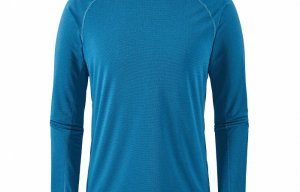
HeiQ and Patagonia expand their partnership
One month ago, American consumers with an average level of activeness were interviewed on the topic of textile odour control.

20th June 2017
Innovation in Textiles
|
Zurich
One month ago, American consumers with an average level of activeness were interviewed on the topic of textile odour control, covering a wide range of home textiles to apparel. The ongoing rising athleisure trend is bringing high-performance sports clothing to people’s everyday life, e.g. in the office.
Although there seems to be a high awareness of sweat-related odour control functions on sports apparel specifically, HeiQ says its Textile Market Knowledge Centre (TMKC) has shed light on the current consumer perception of odours on clothing and home textiles in general, and their level of awareness and involvement in embedded odour control technologies.
All participating consumers were concerned about odours on their textile goods, but their current solution only focuses on post-treatments, i.e. higher frequency of washing, or using stronger washing aids such as bleaching and stronger detergent. None of them mentioned buying textile products with inbuilt textile technologies that prevent or fight against odours. However, once probed, they found it appealing if a textile product would prevent odours to develop or even tackle odours from the surrounding environment.
In fact, consumers would be even willing to pay a 15% price premium for textiles with odour control functionality, according to the Cotton Inc’s 2016 Retail Monitor survey. “Therefore, the implication for textile brands is that an extensive communication of their products with anti-odour performance would help consumers identify the right product that would solve their textile odour issues,” the company explains. “Ultimately, this identified knowledge and communication gap is an opportunity for brands to sell more and capture 15% more added value at point of sales.”
During this in-depth consumer research study, HeiQ also tested different existing marketing messages from brands and ingredient brands and detected what method of communication works best. HeiQ’s TMKC will be glad to share the full insights with its brand partners end of July.
The participating consumer’s focus on increased or stronger washing to post-treat odours on textiles increases the environmental impact. If brands communicate that their products will not stink, and basically would not need an extra washing cycle, those brands can indirectly contribute to a reduced environmental footprint of their textile goods plus prolong the product’s lifetime, the company exlpains.
HeiQ’s research also discovered that, despite the appeal, respondents are critical about the “add-on” to the textile that takes care of odour control. For that reason, educating the consumer is of vast importance.

Business intelligence for the fibre, textiles and apparel industries: technologies, innovations, markets, investments, trade policy, sourcing, strategy...
Find out more